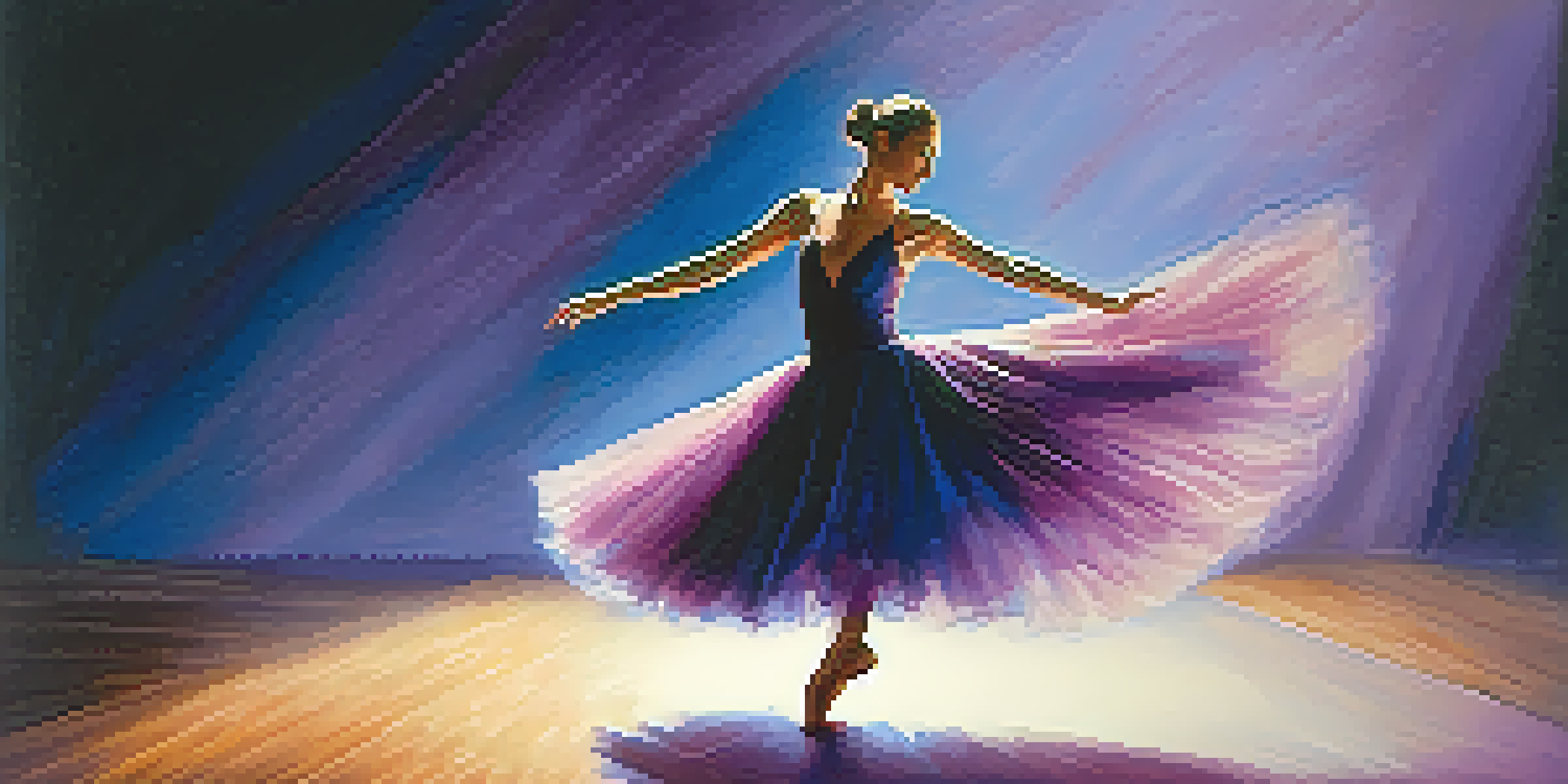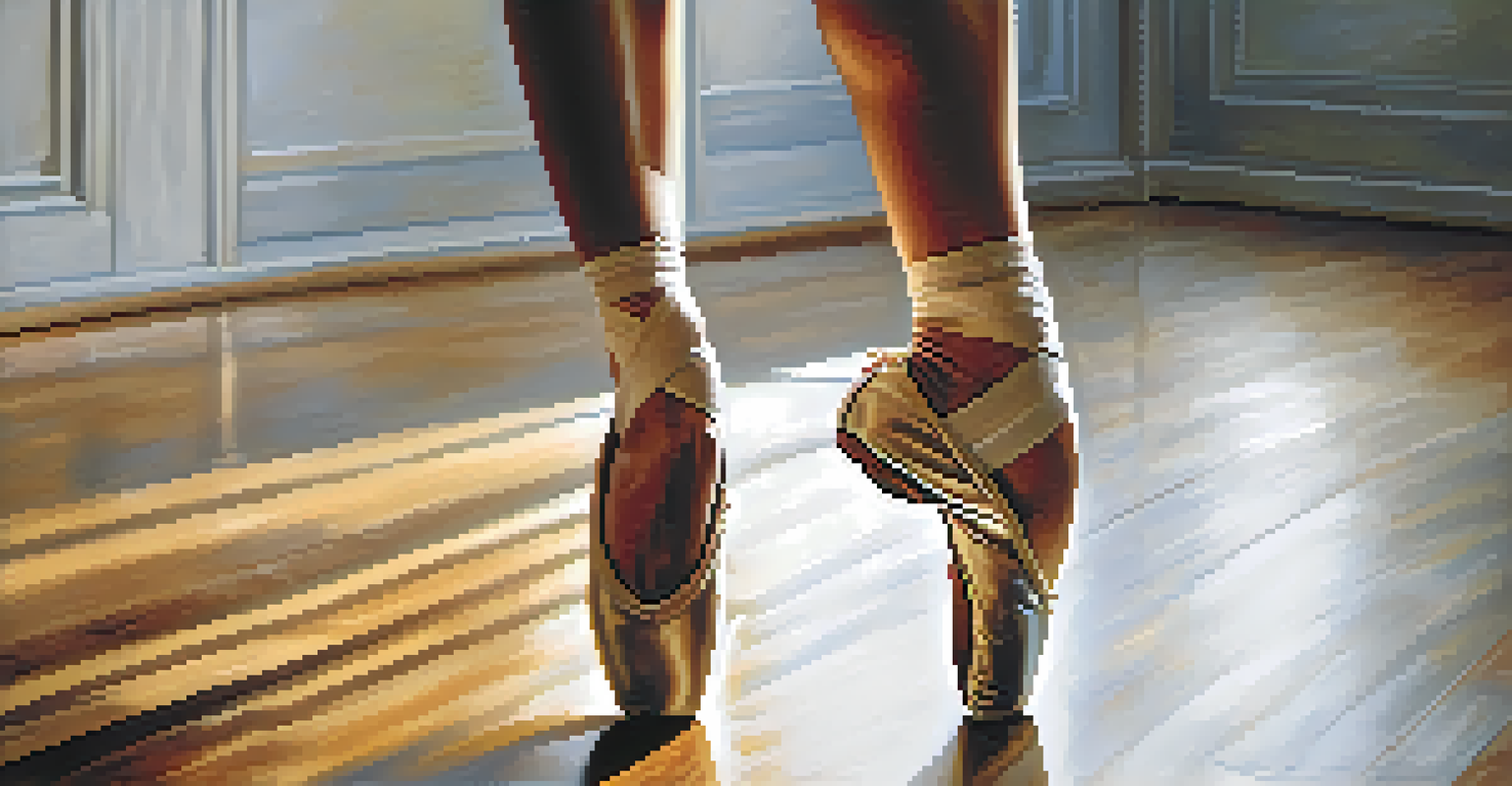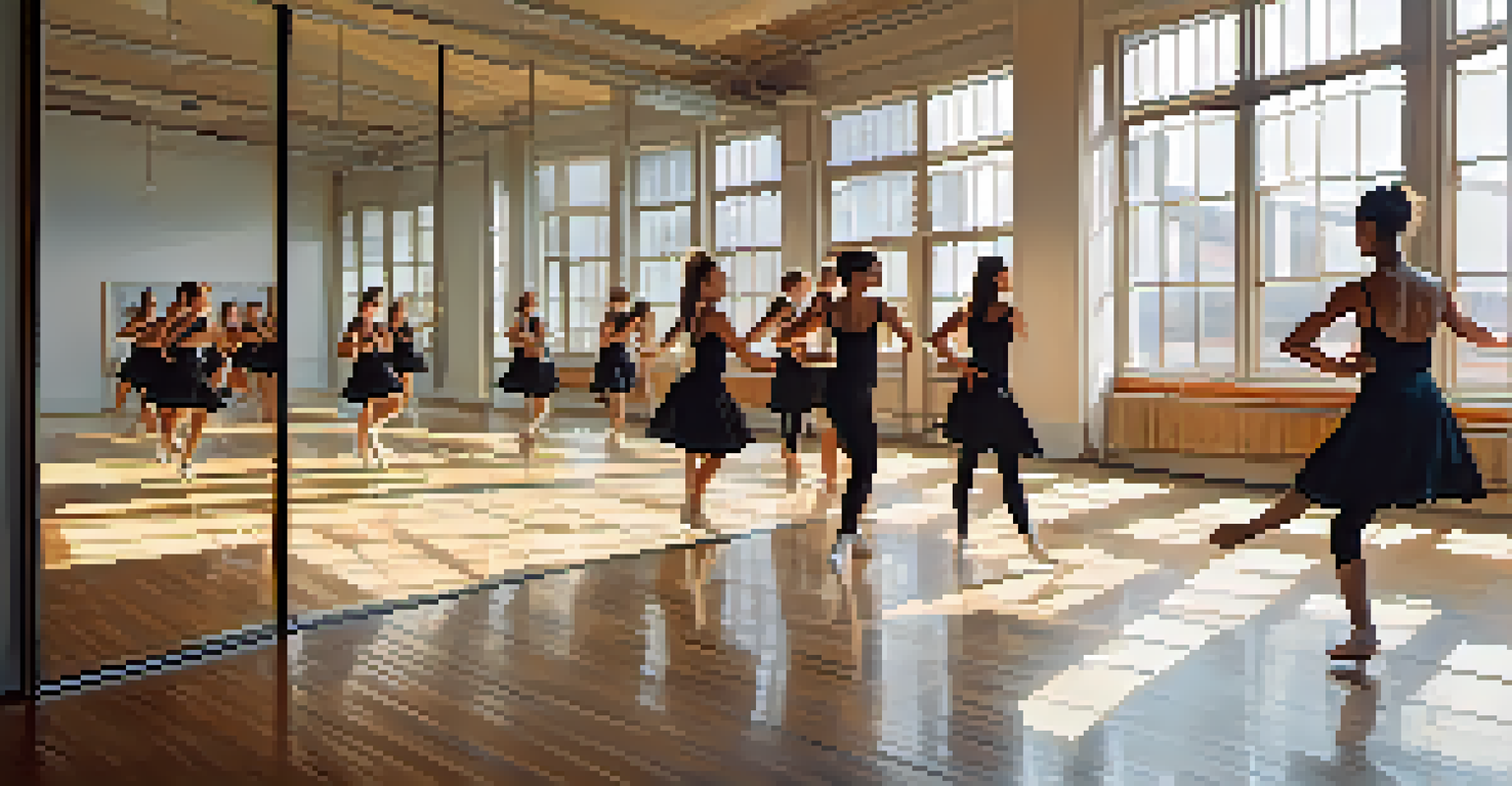Character Development Through Dance: A Deep Dive

The Connection Between Dance and Storytelling
Dance is a powerful medium of storytelling, allowing individuals to express emotions and experiences without words. Each movement can convey a narrative, providing a unique lens through which audiences can connect with characters. This non-verbal communication is essential for character development, as it encourages dancers to embody the essence of their roles fully.
Dance is the hidden language of the soul.
For instance, a dancer portraying a joyful character might use light, buoyant movements to reflect happiness, while a character in turmoil may exhibit jagged, hurried motions. This embodiment not only enhances the performance but also deepens the dancer's understanding of their character's motivations and emotions. As dancers explore these nuances, they inevitably develop a richer, more complex character.
In this way, dance serves as a bridge between the performer and the audience, facilitating a deeper understanding of the characters portrayed. This connection is vital for any artist, as it fosters empathy and emotional intelligence, which are crucial skills in character development.
Building Empathy Through Movement
One of the most significant benefits of dance in character development is its ability to foster empathy. When dancers take on different roles, they step into the shoes of their characters, experiencing their struggles, joys, and fears. This immersive experience cultivates a deeper understanding of diverse perspectives and human emotions.

For example, a dancer playing a character facing adversity might feel the weight of that struggle through their movements, which can lead to a profound realization about resilience. By connecting physically and emotionally with various characters, dancers learn to appreciate the complexities of human experiences—an invaluable lesson that extends beyond the dance floor.
Dance as Non-Verbal Storytelling
Dance uniquely conveys narratives through movement, allowing for deep emotional expression and character connection without words.
Ultimately, this empathic connection not only enhances the dancer's performance but also enriches their personal growth. As they navigate various characters, they develop a broader understanding of humanity, which is essential for any storyteller.
The Role of Technique in Character Expression
While emotion is crucial in character development, the technical aspects of dance cannot be overlooked. Mastery of dance techniques provides the foundation upon which performers can build their characters. The ability to execute movements with precision allows dancers to focus on conveying the emotional depth of their roles.
The dance is a poem of which each movement is a word.
For instance, classical ballet requires a strong understanding of posture and alignment, which can influence how a character is perceived. A character portrayed with elegance through technical prowess can evoke feelings of grace and beauty. Conversely, a more relaxed dance style can represent a carefree or rebellious spirit, showcasing the versatility of technique in character portrayal.
Thus, technique and character expression go hand in hand. By honing their skills, dancers are better equipped to bring their characters to life, creating a more engaging and memorable performance.
Improvisation: A Tool for Character Exploration
Improvisation in dance offers a unique opportunity for character development by encouraging spontaneity and creativity. By stepping away from choreographed routines, dancers can explore their characters in a more organic way, often discovering new facets of their roles. This freedom allows them to break away from preconceived notions and truly embody their characters.
For instance, during an improvisational session, a dancer might react to music or an emotional prompt, leading them to movements that resonate with their character's journey. This process not only enhances their understanding of the character but also promotes adaptability—an essential skill for any performer.
Empathy Through Character Exploration
Dancers develop empathy by embodying diverse characters, gaining a richer understanding of human experiences and emotions.
In this light, improvisation becomes a playground for character exploration, enabling dancers to connect more deeply with their roles. It fosters an environment where they can take risks, make mistakes, and ultimately grow as both artists and individuals.
Collaboration: Enhancing Character Through Teamwork
Collaboration in dance is a powerful force for character development, as it encourages dancers to share ideas and perspectives. Working with others can lead to a richer understanding of characters, as different interpretations can inspire new approaches. This teamwork fosters a sense of community, making the process of character development more dynamic and inclusive.
For example, in a group performance, each dancer may bring their unique interpretation to a character, blending their styles and insights. This collaborative effort can lead to a more nuanced portrayal, as the dancers learn from one another and refine their understanding of the character dynamics. It also nurtures communication skills, essential for any artist seeking to convey complex narratives.
Ultimately, collaboration enhances the character development process, creating a vibrant tapestry of interpretations. As dancers work together, they not only grow as individuals but also contribute to a collective understanding of the art form.
The Impact of Emotion on Performance Quality
Emotions play a pivotal role in character development, influencing the overall quality of a dance performance. Dancers who tap into their feelings can create a powerful connection with their audience, making their characters more relatable and authentic. This emotional investment often translates into a more compelling performance, as the audience can sense the genuine passion behind each movement.
For instance, a dancer channeling sadness into their performance may evoke tears from the audience, as they resonate with the emotion portrayed. This connection is what makes dance so special; it transcends mere movement and becomes a shared experience between the performer and the audience. The more authentic the emotion, the stronger the impact.
The Importance of Technique
Mastering dance techniques is essential for effectively conveying character emotions, enhancing overall performance quality.
Therefore, understanding and harnessing emotions is essential for dancers in their journey of character development. It allows them to elevate their performances from mere execution to heartfelt storytelling, creating moments that linger in the minds of their audience.
Lifelong Lessons Learned Through Dance
The journey of character development through dance extends beyond the stage, imparting valuable life lessons. Dancers learn resilience, adaptability, and the importance of self-expression—skills that serve them well in all areas of life. This holistic approach to character development shapes not only their artistry but also their personal growth.
For example, facing the challenges of mastering a new routine can teach dancers perseverance and discipline, qualities that are essential in any endeavor. Additionally, the emotional depth explored in character work fosters emotional intelligence, allowing dancers to navigate their own feelings and relationships more effectively.

In this way, dance becomes a metaphor for life, where each character embodies different aspects of the human experience. The lessons learned through dance empower individuals to embrace their uniqueness and confidence, ultimately enriching their lives beyond the art form.